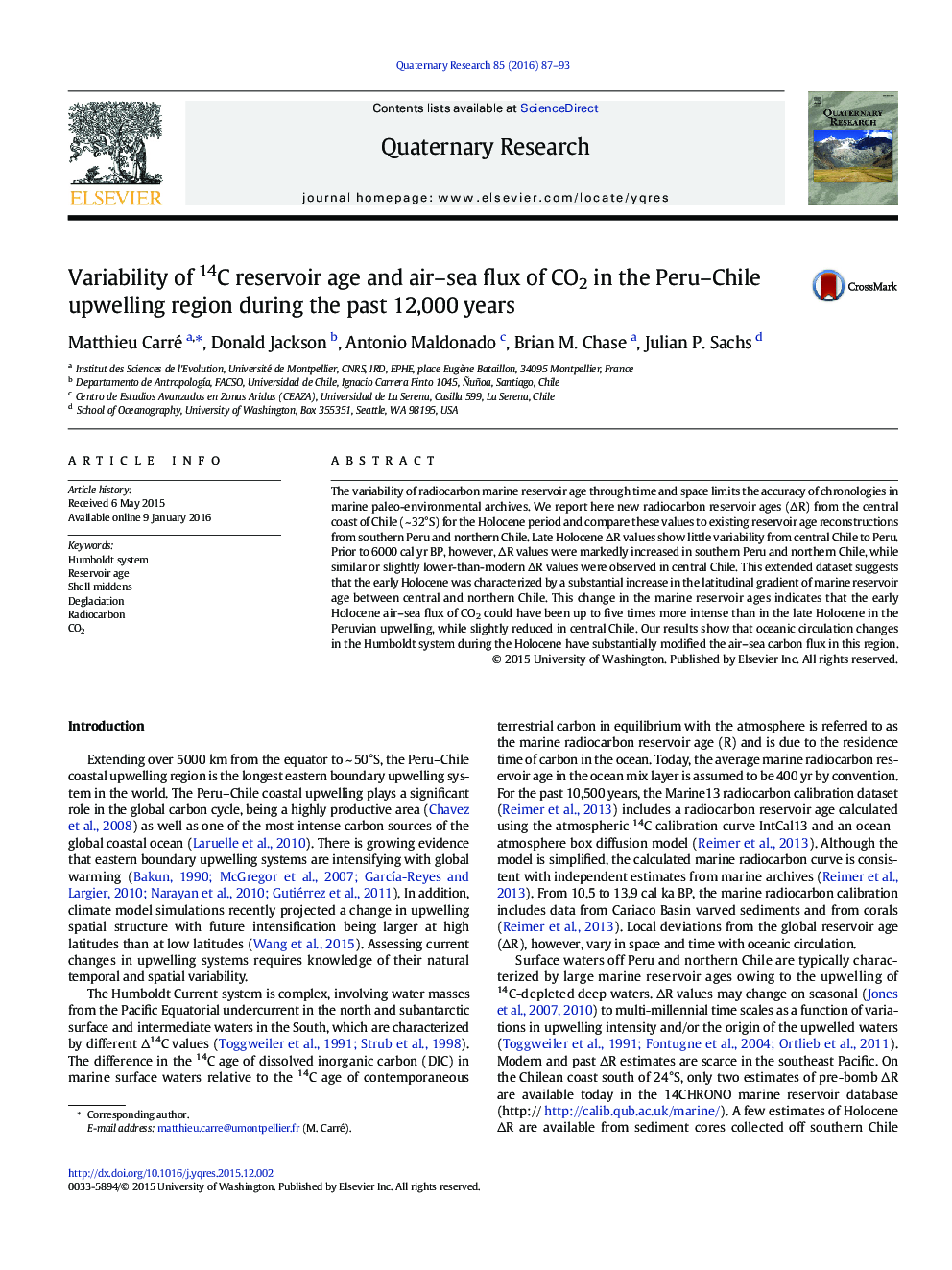| Article ID | Journal | Published Year | Pages | File Type |
|---|---|---|---|---|
| 1045097 | Quaternary Research | 2016 | 7 Pages |
The variability of radiocarbon marine reservoir age through time and space limits the accuracy of chronologies in marine paleo-environmental archives. We report here new radiocarbon reservoir ages (ΔR) from the central coast of Chile (~ 32°S) for the Holocene period and compare these values to existing reservoir age reconstructions from southern Peru and northern Chile. Late Holocene ΔR values show little variability from central Chile to Peru. Prior to 6000 cal yr BP, however, ΔR values were markedly increased in southern Peru and northern Chile, while similar or slightly lower-than-modern ΔR values were observed in central Chile. This extended dataset suggests that the early Holocene was characterized by a substantial increase in the latitudinal gradient of marine reservoir age between central and northern Chile. This change in the marine reservoir ages indicates that the early Holocene air–sea flux of CO2 could have been up to five times more intense than in the late Holocene in the Peruvian upwelling, while slightly reduced in central Chile. Our results show that oceanic circulation changes in the Humboldt system during the Holocene have substantially modified the air–sea carbon flux in this region.
